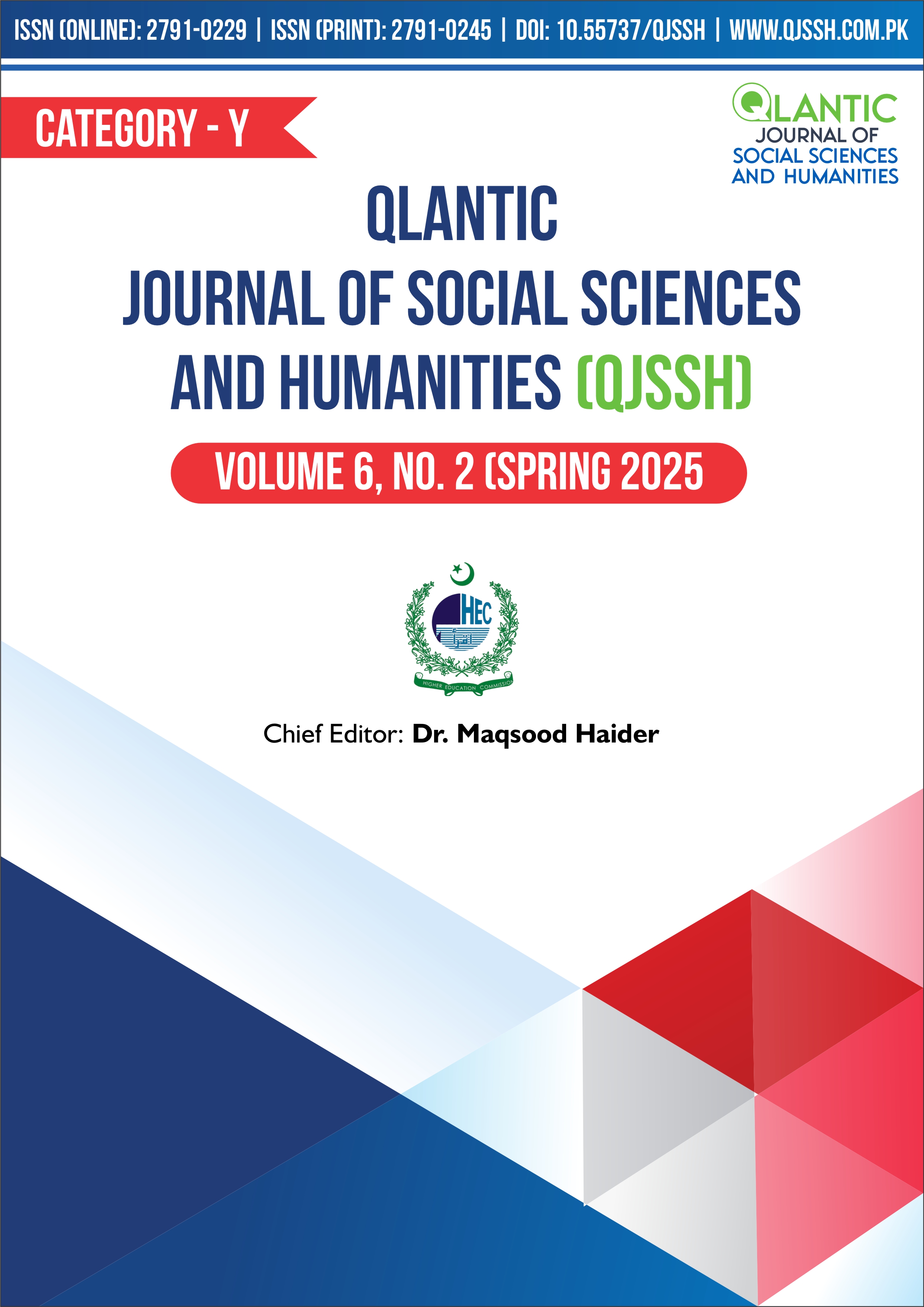The Impact of China's Assertiveness in the South China Sea on Japan's Defense Policy and Regional Security Dynamics: Implications for Stability and Multilateral Cooperation in the Indo-Pacific
DOI:
https://doi.org/10.55737/qjssh.vi-ii.25325Keywords:
South China Sea, Defense Policy, Regional Security, Indo-Pacific, .S.-Japan Alliance, Quad, ASEAN, Military Strategy, International LawAbstract
The purpose of this study is to discuss the impact of growing aggressiveness with the South China Sea (SCS) China on Japan's defense policy as well as overall regional security in the Indo-Pacific region. In response to China's assertive expansion of territorial claims and the military build-up of artificial islands, the Japanese have adapted and advanced in the domains of defense strategy, military capabilities, and regional security positions. This research is intended to help in understanding how Japan has responded to these developments, and what these responses suggest for mutual security cooperation, and in particular the U.S.–Japan alliance, as well as the Quad and ASEAN. Drawing the insights into Japan's evolving defense posture and the role played by the same in maintaining regional stability, we only use the case studies and interviews as well as other documents in this study. Finally, the research will give methodological advice on how to cope with the strain in the South China Sea to guarantee peace and security in the South China Sea long haul for Japan alongside other included nations.
References
Bradford, J. (2020). Southeast Asia: A new strategic nexus for Japan’s maritime strategy. Center for International Maritime Security. https://cimsec.org/southeast-asia-a-new-strategic-nexus-for-japans-maritime-strategy/
Fravel, M. T. (2011). China's strategy in the South China Sea. Contemporary Southeast Asia: A Journal of International and Strategic Affairs, 33(3), 292–319. https://www.jstor.org/stable/41446232
Patalano, A. (2020). The Quad and Japan's maritime strategy: A balancing act. International Affairs, 96(5), 1201–1219. https://doi.org/10.1093/ia/iiaa144
Patalano, A., Nouwens, V., & Childs, N. (2024). Age of naval power in the Indo-Pacific. Japan Memo. https://press.georgetown.edu/Book/The-New-Age-of-Naval-Power-in-the-Indo-Pacific
Singh, B. (2022). Japan’s responses to China’s rise: Soft balancing in Southeast Asia. Asian Security, 18(1), 1–19. https://doi.org/10.1080/14799855.2021.1942849
UNCTAD. (2020). Review of maritime transport 2020. United Nations Conference on Trade and Development. https://unctad.org/webflyer/review-maritime-transport-2020
Zhao, A. (2023). Organizational changes to the PLAN submarine force since 2015. China Maritime Report No. 28. https://digital-commons.usnwc.edu/cmsi-maritime-reports/28/
Zhou, W. (2015). China’s growing assertiveness in the South China Sea. Elcano Royal Institute. https://www.realinstitutoelcano.org/en/analyses/chinas-growing-assertiveness-in-the-south-china-sea/
Downloads
Published
Issue
Section
License
Copyright (c) 2025 Syed Rizwan Haider Bukhari, Dr. Ghulam Mujaddid , Rehmat Ullah

This work is licensed under a Creative Commons Attribution-NonCommercial 4.0 International License.





